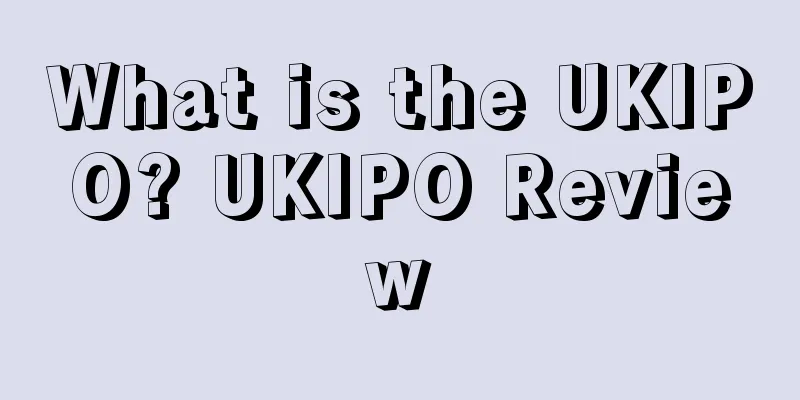What is the UKIPO? UKIPO Review

|
The United Kingdom Intellectual Property Office (UKIPO) has been the operating name of the United Kingdom Patent Office since 2 April 2007. It is the official UK government body responsible for intellectual property and is an executive arm of the Department for Business, Energy and Industrial Strategy (BEIS). Headquarters Address Intellectual Property Office, Concept House, Cardiff Road, Newport, South Wales, NP10 8QQ Founded 1 October 1852 Outside the UK +44 (0) 1633 814000 Website www.gov.uk/government/organisations/intellectual-property-office Telephone 0300 300 2000 E-mail [email protected] Responsibilities 1. Formulate intellectual property policy 2. Examination, grant or refusal of UK patents, trade marks and designs 3. Responsible for coordinating the efforts of government decision-makers, law enforcement agencies, enterprises, etc. to jointly combat crimes in the field of intellectual property rights 4. Enforcement of laws and regulations related to intellectual property rights history In 1852, the British government promulgated the Patent Amendment Act and established the United Kingdom Patent Office (UKPO), which has a history of more than 150 years. In 1990, UKPO officially became a government agency under the UK Department of Trade and Industry (DTI), and on October 1, 1991, it obtained Trading Fund Status, thus achieving self-sufficiency. On April 2, 2007, with the approval of the British government, UKPO was officially changed to the United Kingdom Intellectual Property Office (UKIPO). Application Procedure for Invention Patent Application 1. Submit your application Application documents may be submitted in paper form by mail or electronically online. The description and drawings (if any) must be submitted together with the application. The claims and abstract may be submitted within 12 months after the filing date (priority date), but if there are no special circumstances, it is recommended that the applicant submit all documents together to avoid the situation where the newly added content exceeds the scope of the original description and the delay in obtaining the search report due to the lack of claims and the inability to conduct a search. If the applicant is not the inventor or not all inventors, or is filing the application in the name of a company, then a declaration of inventors is required. This declaration should indicate to the UK Intellectual Property Office who the inventor is and why the applicant has the right to apply. An applicant may claim priority from an earlier application within 12 months from the filing date of the earlier application. A priority claim should be made when the application is filed. If not made at the time of filing, a priority claim may be added within 16 months from the filing date of the earlier application and provided that no early publication request is made or the request is withdrawn, but a fee of £40 must be paid. If the applicant fails to file an application and request priority within 12 months from the date of the earlier application, he or she may also submit an application and make a late declaration within 14 months from the date of the earlier application, and provide evidence to explain why the application was not filed within 12 months. If the UK Intellectual Property Office recognizes that the applicant's failure to file an application within 12 months from the date of the earlier application was unintentional, the priority claim may be restored. The applicant needs to pay a fee of £150. 2. Acceptance and preliminary examination If the application submitted by the applicant meets the requirements, the UK Intellectual Property Office will issue an acceptance notice, confirming the application date and giving the application number. Currently, if the application is submitted electronically, the electronic acceptance notice can generally be received on the same day. After the applicant pays the application fee, the UK Intellectual Property Office will conduct a preliminary review of the application to examine whether the application meets the formal requirements. If there are any areas that fail to fully meet the requirements, a notice will be issued, requiring the applicant to make corrections within a specified period. For Chinese applicants, a common situation is that they have requested the priority of an earlier Chinese application, but did not submit the priority certificate when submitting the application, so they will receive a notice requiring them to submit the priority certificate. 3. Search report A search request and search fee must be submitted within 2 months from the filing date or within 12 months from the earliest priority date, whichever is later. If a search request is not submitted or the fee is not paid, the application will be terminated. The UK Intellectual Property Office will issue a search report within 6 months of receiving the search request. 4. Patent application publication If the application documents meet the requirements and the search has been completed, the application will be published together with the search report 18 months from the filing date or priority date. Before the application is published, the UK Intellectual Property Office will inform the applicant of the expected publication time and the time to complete the publication preparation. If the applicant wishes to avoid publication by withdrawing the application or amend the claims and include them in the published application, he must submit a withdrawal request or amendment document before the time to complete the publication preparation. 5. Substantive Examination The application must be submitted within 6 months after publication. If the application is not submitted or the fee is not paid within this period, the application will be deemed withdrawn. After receiving the applicant's request for substantive examination and the substantive examination fee, the UK Intellectual Property Office will conduct a comprehensive review of the application documents to evaluate whether the invention is novel and inventive, and whether the description and claims meet the requirements for authorization. 6. Authorization/Rejection If the application for invention patent meets the formal and substantive requirements, the patent right shall be granted and announced, and a patent certificate shall be issued. Otherwise, the application shall be rejected. A granted UK patent requires annual fees to be paid from the fifth year onwards to maintain the validity of the patent. If, after substantive examination, the examiner believes that the applicant's amendments and responses do not completely overcome the reasons for rejection stated in the notice, the examiner will inform the applicant of the intention to reject the application and provide the applicant with the opportunity to attend a hearing. If the applicant does not respond to this, the application may be deemed rejected at the expiration of 4 years and 6 months from the filing date or priority date or 12 months from the date of issuance of the first substantive examination opinion notice, whichever is the latest. If the applicant attends the hearing, a hearing officer (a senior examiner, not the examiner in the original substantive examination stage) will review whether the application meets the authorization conditions. The applicant may also submit amendments and state the reasons, and the hearing officer will conduct a written review of the application. If the applicant is dissatisfied with the hearing results, he or she may sue the Patent Court. 7. Modifications The applicant may make an active amendment between the date of receipt of the search report and the date of issuance of the first substantive examination notice. However, if the first substantive examination notice is a grant notice, the applicant may make amendments to the application documents within two months from the date of issuance of the notice; if the first substantive examination notice indicates that the application does not meet the requirements, the applicant may make one amendment to the application when submitting a reply. 8. Public Comments Anyone who believes that the invention in a patent application should not be granted can submit a public opinion to the UK Intellectual Property Office. Public opinions must be submitted after the application is made public and before it is granted. In order to ensure that the public has time to submit opinions, the UK Intellectual Property Office will wait at least 3 months after the application is made public before making a grant decision. It is recommended to submit public opinions during this period. Public opinions can be submitted anonymously, but all submitted documents will be forwarded to the applicant and added to the examination file and available to the public. References
|
<<: What is engine power? Engine power evaluation
>>: What is Amazon.com.au? Review of Amazon.com.au
Recommend
The top seller in East China crashed! Suppliers blocked the door to demand payment
Yesterday, it was revealed that Zhiyu, a major cr...
37 exam questions for a barley company's interview operation
37 exam questions and answers for a barley compan...
Amazon account is frozen again? The storm before the peak season is coming...
The blocking of an account by Amazon is actually ...
Shein's home furnishing category has over 50,000 products! The ambition is not to be fast fashion
According to foreign media reports, Shein currentl...
What is the Shopee order uncompleted rate? Shopee order uncompleted rate evaluation
Shopee's order uncompleted rate refers to the ...
What is SCITOO? SCITOO Review
Scitoo (Shenzhen Scitoo Industrial Co., Ltd.) is h...
What is brand infringement? Brand infringement assessment
Also known as trademark infringement, it is a viol...
What is JB HI-FI? JB HI-FI Review
JB HI-FI is a well-known electrical appliance reta...
What is a Secondary Review? Secondary Review Evaluation
The secondary review is a new review mechanism lau...
Big news! Savitech will be officially launched on July 12!
It is learned that on July 11, Suntech Power issue...
How to improve Facebook advertising effectiveness during the year-end peak season
Sales during the peak season largely affect whethe...
The United States announced that it would impose additional 301 tariffs on Chinese products, raising the maximum tariff to 100%!
It is learned that on May 14, the United States re...
Practical information sharing! In-depth analysis of Amazon CPC advertising
The placement of advertising on Amazon is an impor...
A new round of logistics crisis! Many Amazon warehouses in the western United States have been overwhelmed
Not long ago, after Amazon officially announced th...
More than 20 people were arrested! Amazon cracks down on "fake orders and fake reviews"!
Normal, once there is data abnormality, such as s...









